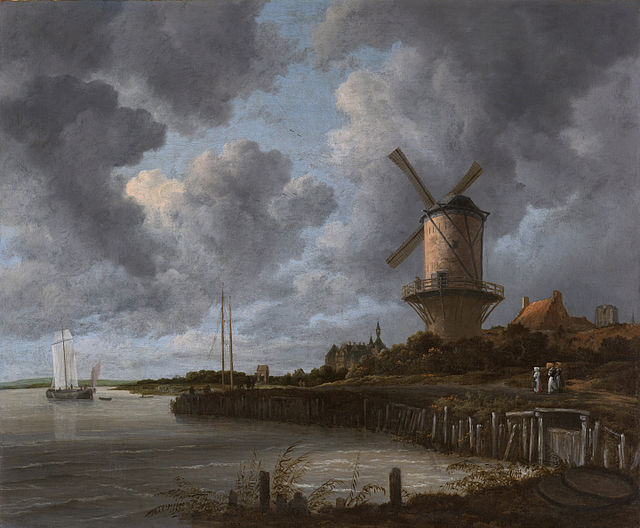Jacob Isaackszoon van Ruisdael was a Dutch painter, draughtsman, and etcher. He is generally considered the pre-eminent landscape painter of the Dutch Golden Age, a period of great wealth and cultural achievement when Dutch painting became highly popular.
Windmill at Wijk bij Duurstede (c. 1670)
A View of Egmond aan Zee (1640) by Salomon van Ruysdael
A View of Egmond aan Zee (c. 1650) by Jacob van Ruisdael
A View of Bentheim Castle (1650s) by Jacob van Ruisdael
Landscape painting, also known as landscape art, is the depiction of natural scenery such as mountains, valleys, trees, rivers, and forests, especially where the main subject is a wide view—with its elements arranged into a coherent composition. In other works, landscape backgrounds for figures can still form an important part of the work. Sky is almost always included in the view, and weather is often an element of the composition. Detailed landscapes as a distinct subject are not found in all artistic traditions, and develop when there is already a sophisticated tradition of representing other subjects.
Joachim Patinir (1480–1524), Landscape with Charon Crossing the Styx, 1515–1524. Patinir pioneered the "world landscape" style.
Themistokles von Eckenbrecher (German, 1842–1921), View of Lærdalsøyri, on the Sognefjord, 1901
Dong Yuan (934–962) Dongtian Mountain Hall (Chinese: 洞天山堂圖). 10th century, the Five Dynasties (Chinese). National Palace Museum, Taipei.
Landscape with scene from the Odyssey, Rome, c. 60–40 BCE








